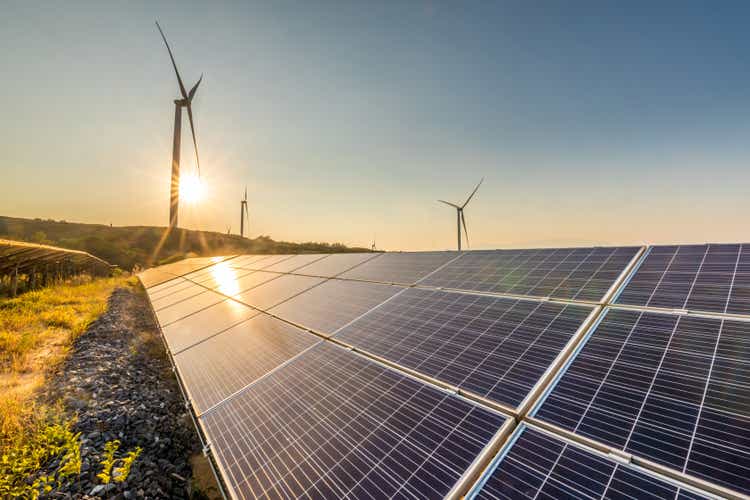zhongguo
Net zero is an ambitious plan for the rapid decarbonization of most sectors of the world’s economies before set deadlines in the coming future. These plans are multi-faceted with transportation, electricity generation, and industry forming the immediate focus of policymakers. Indeed, the US Congress just passed the Inflation Reduction Act, setting the stage for one of the most significant climate-focused bills when it is signed into law. The bill allocates $370 billion over 10 years to decarbonization initiatives that are set to further supercharge the rollout of renewable energy in the United States.
The rationale for the bill that now aims to forever shift the makeup of the American energy system away from fossil fuels and to solar and wind is that anthropogenic climate change is real and the US has to contribute to the global effort to restrict the rise in mean global temperature to well below 3.6 °F above pre-industrial levels.
Critically, the intermittency of renewable energy means utility-scale battery storage will be required to smooth out the peaks and troughs of renewable energy generation. With Stem (NYSE:STEM) being one of the largest publicly listed pureplay energy storage companies, the company occupies a critical position in helping the US hit net zero. This position will also likely accrue significant alpha if the company hits its revenue and profitability targets.
To be clear here, renewable energy was already on an upward ramp, accounting for the bulk majority of US interconnection queues at the end of 2021. Without government intervention, the industry would have thrived, so this bill is akin to downing an energy drink straight after drinking a large cup of coffee. It will catalyse an energy storage rusk as it provides an investment tax credit which will result in around a 30% reduction of capital costs over the 10 years it is in place. The bill also provides support for domestic battery manufacturing.
Revenue Growth Charges Up As Profitability Improves
Stem recently reported earnings for its fiscal 2022 second quarter which saw revenue come in at $66.95 million, a 247% increase from the year-ago period and a $9.72 million beat on consensus estimates. The company’s bookings also came in at $226 million, up 405% year-over-year from $45 million with its 12-month pipeline growing by 8% sequentially to reach $5.6 billion. Contracted annual recurring software revenue also grew to $58 million, up 12% sequentially from $52 million.
The company’s underlying profitability also improved during the period as a net loss of $32 million was down significantly from a net loss of $100 million in the year-ago quarter. This came on the back of GAAP gross margins that hit 12% from -1% in the comparable year-ago period. Cash burn from operations at $6.6 million was also a significant improvement from a burn of $40 million in the year-ago quarter. Hence, with capital expenditure during the period of just $1.3 million, the company’s negative free cash flow during its last reported quarter came in relatively low at $7.9 million. This was against cash and equivalents that stood at $335 million at the end of the quarter.
The strong results led Stem to raise its fiscal 2022 bookings and contracted annual recurring software revenue guidance by 20% and 7% respectively. The company also reaffirmed revenue to be between $350 million to $425 million versus a consensus of $386.81 million. It’s important to note that this guidance does not reflect the forward impact of the Inflation Reduction Act. Management has stated the bill will grow the total addressable market for storage by at least 20% in a worst-case scenario. However, bulls would not be remiss to consider arguments from the bears centred on Stem’s continued unprofitability and dependency on commoditized battery sales for most of its revenue. The company faces competition from newer battery technology that could provide longer-term storage at a cheaper price.
Net-Zero Is A Zero Without Utility-Scale Energy Storage
It will be hard to see a future where renewable energy generation fully replaces current baseload sources of energy without large-scale battery storage capacity being built out. This means the drive to net-zero, a medley of pledges around the world to reduce reliance on fossil fuels and cut greenhouse gas emissions to as close to zero as possible, cannot truly be achieved without companies like Stem.
I’ve remained bullish on my position against the significant retracement we have seen from all-time highs and stand ready to add to my position as the Inflation Reduction Act supercharges a sector already materially ramping up. The bill is significant and has been hailed as the most significant win of the current administration with the energy crisis in focus. Stem now faces a future of almost unprecedented growth.


Be the first to comment